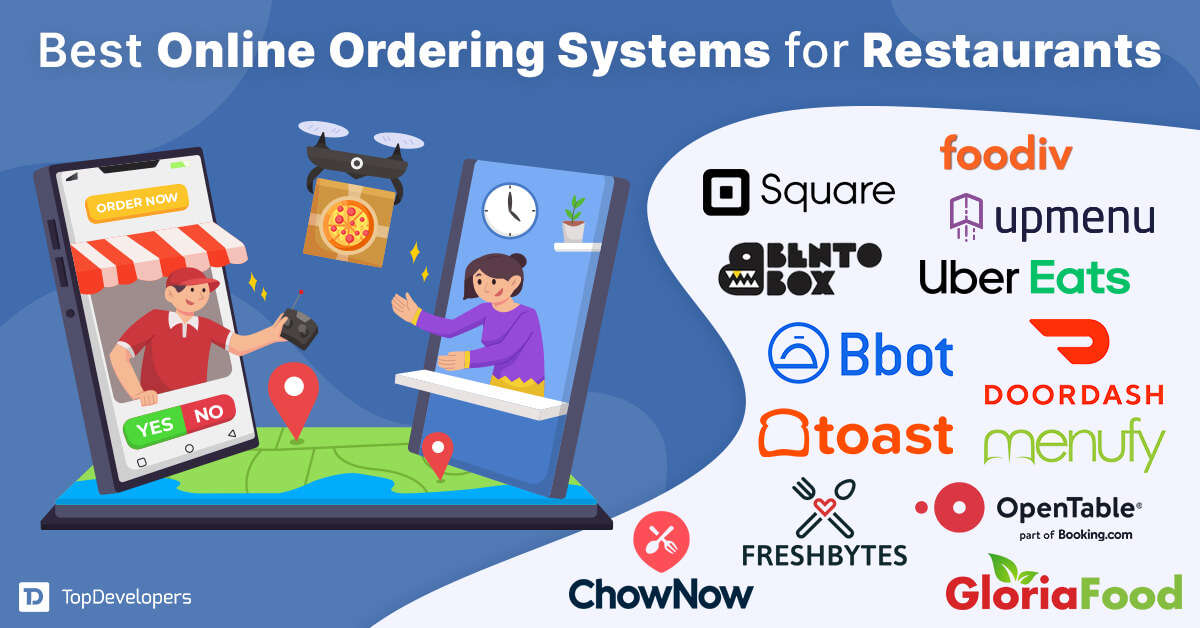
The astronomical rise in mobile app development has made them a household name over the last few years. It provides a lucrative opportunity for businesses to engage customers and increase profits. However, building an app that engages the customers in the sea of millions of apps and then monitoring the engagement levels from different angles is vital.
How do you as an appreneur measure the app’s success or measure success towards the final goals? That’s where mobile app KPIs help you measure the impact of all the functionalities and design on the app. KPIs or Key Performance Indices are the most optimum way to get the best insights into the app, optimize it and generate the maximum amount of revenue.
Mobile app KPIs unveil what’s working and what’s not about the target audience, which, in turn, helps marketers to gauge the app’s success and explore more ways to grow business, sales, and revenue. Given that the significance of mobile app KPIs is huge, let us have a look at all those mobile app metrics to improve your mobile app, thus the business.
Table of Contents
Retention Rate
Retention rates indicate how many users after visiting the app once like to use it repetitively or stay with the app. The percentage of users who like to continue using the app is termed as ‘retained’ that showcases the app’s value in the market. Higher retention rates have positive implications for the mobile app’s future earnings.
Retention rates are calculated using a simple formula, that’s:
Retention rate = number of monthly active users / number of app installs
After measuring retention rates, if you find the numbers are going southwards, it indicates necessary changes need to be made to ensure the app’s success.
Churn Rate
This KPI defines the percentage of users abandoning or uninstalling the app due to different reasons such as crashes, long checkout, lack of updates, lengthy onboarding, and others. It’s not at all healthy for mobile apps. It can be determined by checking which touchpoints are making the users log out or drop them off.
Re-evaluate the user interactions and functionalities that are putting the users off and alas, abandoning the app. low churn rate is an indication of the higher users’ happiness index. The average retention rate is calculated with a simple formula:
Churn rate = number of churns / number of customers
Monthly Active Users (MAUs)
Monthly active users KPI indicates the total number of users who opened the app and used it in a month. It determines how often the users visited the app in a month along with the duration of every session. This metric dramatically defines which revenue model is bringing the maximum revenue.
The increasing or decreasing count of monthly active users signals whether user acquisition and retention efforts are driving outcomes as expected or not. Besides, the attempts of improving user engagement through transformed marketing strategies result in reduced user acquisition costs. The leading digital marketing agencies consider this metric important in taking user engagement to a higher level.
UX and performance metrics
The mobile app performance KPIs encompass several metrics that help in identifying all the performance-related issues which enable the development team to fix them off the bat. They are:
Load speed KPI defines the time that the app takes to get ready before the users interact with the app. The zero tolerance for waits makes the users uninstall or abandon the app right away. The high loading time becomes the top reason to increase churn rate and reduce retention rates. The loading time must be measured using the right tools for the winning results.
Both- Apple and Android devices come in different sizes, which means distinct screen resolutions. The mobile app must perform flawlessly across all devices irrespective of screen size. Rigorous testing and QA are all-important to ensure no screen resolution issues. Top UI/UX design agencies consider this KPI as an important factor to ensure wow experience delivery.
The app crashes due to unexpected user actions, complexity, or unfortunate OS functionality update that upset the users. The crash reports help in finding the exact point where the app crashes along with the reason.
Cost Per Acquisition (CPA)
Let’s accept it: acquiring a new user is not an easy endeavor. It’s difficult in terms of marketing efforts and requires huge monetary investment as well. Cost per acquisition KPI defines how much is invested in each user financially to acquire them through a specific marketing channel. Digging further, this metric also unfolds the marketing channel that helps in acquiring maximum users so that the marketing budget is planned accordingly.
The cost per acquisition is measured through a simple formula, that’s:
CPA = amount spend on each marketing campaign / number of users acquired
The CPA helps in comparing the marketing campaigns’ effectiveness and managing the budget intelligently.
Customer Lifetime Value (LTV)
Making the users install the app is a half-won battle. The remaining half battle is won when the users purchase or subscribe to services using the app. The revenue that users have generated from the moment they downloaded the app to date is the customer lifetime value that highlights the brand-customer relationship strength.
The higher the LTV as compared to the cost per acquisition, the more it’s beneficial for the mobile app. LTV is calculated through a simple formula, that’s:
LTV = total amount spent by the users / total number of buyers
Return on Investment
Determining the value generated by different campaigns and then comparing them helps in figuring out the campaign that’s best for the buck. Various factors are compared within every campaign that drives maximum conversion and revenue to the table. Return on investment KPI is good mobile marketing KPI that helps in measuring ROI about the net return, profit, and more.
Return on investment is measured with a simple formula, that’s:
ROI = (final value of investment – initial value of investment) / total cost of investment * 100%
Mobile App Stickiness Ratio
The stickiness ratio determines the users’ stickiness to the app means the number of times they log in to the app regularly. The increasing stickiness ratio is a sign of everything is going well and as per the users’ expectations. Also, the KPI enables appreneur to dig deeper into the user category level for gaining in-depth insights into users’ preferences.
The mobile app stickiness ratio is checked through the easy formula:
Stickiness ratio = daily active users / monthly active users
Daily Active Users
Highly-engaged users are a precious asset to mobile applications and keeping tabs on them brings good results. Daily active users KPI helps in identifying how many users are interested in using the app daily irrespective of the number of sessions per day. DAU is measured for any specific day where all the individuals who use the app daily are counted regardless of how many times they used the app in a day. The mobile app KPI will help the developers to adjust actions according to the mood and suggestions of the users so that the number of people who sign in will show more interest in the app. It is the ultra-consistent sign of the app pulling users and doing a mighty great job for the developers and the company.
Indicating Acquisition
App analysis clearly shows that not all the acquired users use the app in a similar manner. 2017 will be the year that will show that quality metrics matter when it comes to the user acquisition of the app. Mobile app development nowadays does not really rely on app engagement alone as 25% of the users just use their app only once before they leave.
However, improvised mobile app KPIs related to app acquisition will help in targeting the users in a more authentic and improvised manner. They help marketers to differentiate between good and bad users by analyzing data coming from different traffic sources. This, in other words, can be called as attribution marketing and will track all the pain points that will lead your app in acquiring a loyal user.
The potential app analysis done by this KPI will comprehensively track cost per monetization and the retention rate of the app by the day.
Daily App Launches
Once the user has installed your app into his/her device, it’s important to see how many daily launches your app receives. Daily app launches show that how many times a user has opened the app on a given day. The process of mobile app development concentrates keenly on creating such specification that will compel the user to use their app multiple times on a given day. The marketers also can relish this opportunity and include such kind of app into their app marketing strategy.
Daily app launch is vital for indicating the app’s success ratio. The developers and the marketers can pay attention to this and figure out the fluctuating numbers in a week or so in order to find out they way people interact with the app or product. The app marketing strategy can be modified according to the traffic the app receives on a particular day, for example, you can schedule a flash sale on Thursday if it shows the maximum number of users.
An authentic daily app launch KPI will allow the marketers to make their maximum effort in the correct direction and get rich dividends from it.
Measuring Revenues
In order to measure the actual profitability of the app, the app KPI’s that indicate revenue should be the best and the most authentic one. The revenue indicator measures the active user base of your app and shows that better number of engaged users lead to better sales. They are used to measure the actual money coming in from the app and indicate that improved methods of app engagement can have positive effects on the revenue numbers as well.
The biggest asset of this KPI is that it correctly shows the LTV (Lifetime value) of the app. As the name itself suggests, LTV will show the value of the user over the entire usage period of the app. This metric is highly valuable for the process of mobile app development and app marketing as it helps in noticing the points that are most valuable to the user and can be the appropriate ally in improving the mobile app retention rate.
App Usage Session
The process of mobile app development nowadays focuses on including multiple features so as to attract a major number of customers from different prospects. Therefore, they have a huge number of screens and thus it becomes important to know the number of time spent by the user. The number of screens per session KPI will give detailed information about the aspects that the users like the most and get interacted with them on a regular basis.
This mobile app KPI is majorly important for making app marketing strategies as the marketers will understand which screen is visited the most so that they can strategically plan their in-app purchases according to that. Moreover, app usage sessions will give an improved and better user experience (UX) and generate high revenue for the mobile app.
Conclusion:
As we started, so shall we end!! There is a magic mantra from one of the leading management gurus
“What gets measured, gets managed”
– Peter Drucker
Thus, KPIs are so very important for the success of the mobile app as they help in measuring and understanding the effectiveness of the app and how effectively it can be optimized to boost the user-base and bring it on the top of its category. Reliable mobile app development companies always bake the mobile app KPIs into planning and strategy even before the app development ball roll over for reliable results.
 Avantika Shergil
| Oct 11, 2022
Avantika Shergil
| Oct 11, 2022
An enthusiastic Operations Manager at TopDevelopers.co, coordinating and managing the technical and functional areas. She is an adventure lover, passionate traveler, an admirer of nature, who believes that a cup of coffee is the prime source to feel rejuvenated. Researching and writing about technology keeps her boosted and enhances her professional journeying.





